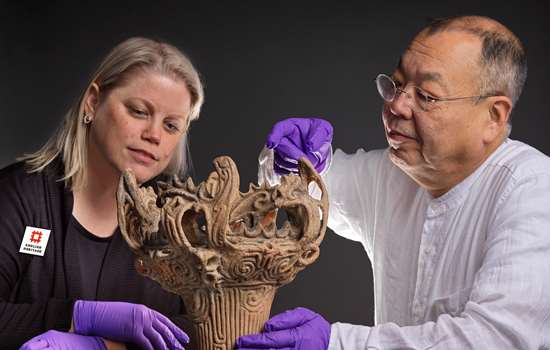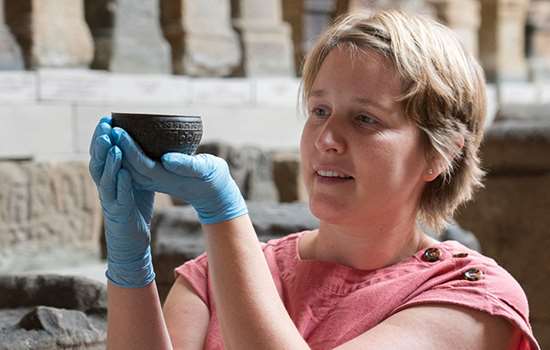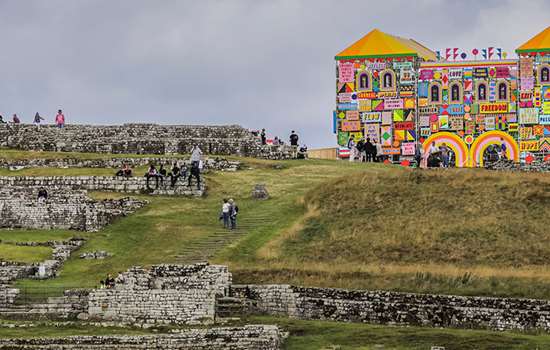19/07/2019
Names of 400 First World War Conscientious Objectors Revealed for the First Time
The most comprehensive list of conscientious objectors at Richmond Castle is unveiled in a new museum
The names of 400 conscientious objectors who passed through Richmond Castle in North Yorkshire during the First World War will be revealed for the first time. The 400 names are included in a new museum at the castle which opens Saturday 20 July.
Searching through over 10,000 digitised military records and existing databases, researchers at English Heritage have compiled the most comprehensive list of Richmond conscientious objectors (COs) in existence. After months of research, the list of the 400 COs highlights the hundreds of men who objected to war on moral grounds and were imprisoned or barracked within the castle during 1916-17.
A Non-Combatant Corps uniform, possibly the only accurate representation of the uniform on display in the country, joins a number of items exhibited for the first time in the new museum. The museum will also include a rare c.1916 white feather letter, sent to chastise COs for refusing a combat role. Along with these items visitors will see a uniquely ugly ceramic propaganda sculpture of a conscientious objector bearing the word ‘conchie’ – a derogatory term for COs at the time – as well as an original conscription poster, COs’ personal postcards and photographs.
Who were the conscientious objectors?
Richard Mason, English Heritage’s Curator, said:
'During the First World War, hundreds of men who objected to conscription were sent to Richmond Castle and lived, worked or were even imprisoned within these walls. But until now, there has been no comprehensive record of who they were, where they came from or what made them choose this difficult path.
'Pouring over the thousands of military records to identify these names has taken a great deal of detective work, and being able to breathe life once again into these men’s stories has been a humbling experience. But we may still never know all of the names of those who passed through the castle, and urge anyone who may have more information to come forward. These men played an important role in the future development of human rights and deserve recognition.
'I’d like to thank one of our volunteers at Richmond Castle in particular, Dawn Price, whose tireless research has been invaluable in producing this list.'
At the height of the First World War in 1916, the British government passed the Military Service Act, introducing conscription for the first time. It made military service compulsory for millions of men across Britain, but also included a ‘conscience clause’, allowing men to object on moral grounds.
Over 20,000 men registered as COs during the following two years. Hundreds of COs were sent to Richmond Castle where the majority trained in the Non-Combatant Corps (NCC). These were men prepared to accept only non-combatant duties in that they wore army uniform and were subject to army discipline, but did not carry weapons or participate in battle. Those who rejected any military authority – absolutist conscientious objectors – were imprisoned in the castle cells.
Personal stories brought to life
The personal lives of two COs at Richmond will be told in the new museum through audio readings of their memoirs and letters. Private Horace Eaton, a Non-Combatant CO, was 27 when faced with conscription but objected on religious grounds and was barracked at Richmond Castle. His memoirs detail life in the NCC and the poor treatment of those absolutist objectors:
'One fine looking fellow was brought in on Tuesday by two soldiers – handcuffed and a very heavy kit bag containing all his things and heavy boots were fastened about his neck nearly choking him. He was pushed about and finally put in the cold cells where he nearly collapsed.'
James John Burchell, an absolutist CO, also refused conscription on religious grounds and was granted exemption from combatant duties, being enrolled in the Non-Combatant Corps. But he refused any part in work that aided the war effort, and was imprisoned in the cell block at Richmond where his graffiti is still visible today.
The 400 names will be on display within the new museum, which reopens to the public tomorrow. The museum tells the story of Richmond Castle through the ages, from the reign of William the Conqueror to the castle’s role during the First World War.
Find out more about the history of conscientious objectors at Richmond Castle.
For more from English Heritage, follow us on Facebook, Twitter and Instagram.



